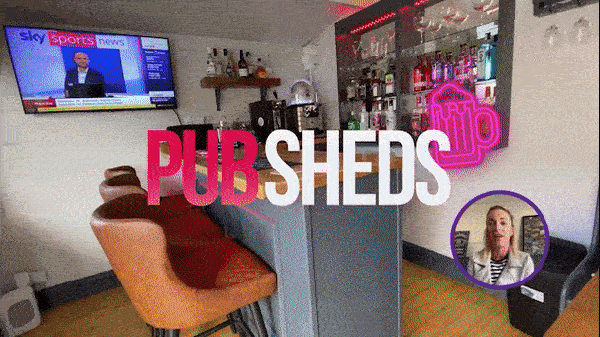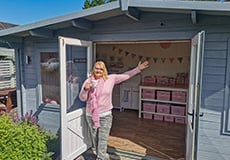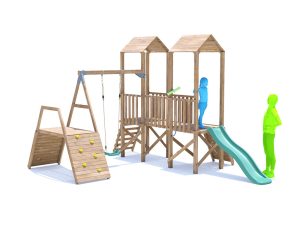We want your children to enjoy our climbing frames as much as possible. Our design team, many of which are just big kids themselves, spend hours labouring over the tiniest detail to make sure fun is a priority. However, your children’s safety comes first. This is why we have all of our climbing frames and playhouses independently tested to CE EN71 standards.
If you’re like me, you want the best for your child, but terms such as ‘independently tested’ and ‘CE EN71’ go straight over the top of your head. As a company, we try to be as transparent as possible. That is why I decided to investigate what CE EN71 actually means.
CE
The CE marking isn’t actually for you. It is to show the authorities who regulate toy safety in the UK and tell them that the climbing frames or play system is going to be sold within the European Community and conforms to their safety requirements. Whilst it is not predominately for you, it doesn’t mean it is not important. If you purchase a climbing frame without a CE mark then you will never know if it’s been made according to EU safety regulations.
EN71
EN71 applies to all toys for children up to the age of 14. Within these limitations, it divides the suitability into age ranges and adds warnings to toys meant for children under three. After a very long time researching, I’ve identified how we comply with the standards that the EN71 have set:
Weight Test
We hang weights culminating in 200kg, approximately 10x the weight of an average 6-year-old. This is to ensure the strength of our climbing frames. The weights are divided by two 100kg weights attached to the swing hooks. These are then left for hours to ensure there are no weaknesses. Additionally, each platform is tested with 100kg weight to ensure your climbing frame doesn’t buckle as your children, and their friends descend on it each weekend.
Gauge
We use different size gauges that represent the average size of a child’s head and feet. These gauges are then pushed through relevant gaps, the foot gauge on the climbing wall and the head-sized gauge on the monkey bars. All to make sure that your kids can’t become trapped and injured whilst playing.
Toggle
Fashion can be a nightmare for climbing frames. Coats, long tops, tights, trousers and belts can become trapped in gaps and on loose screws. During testing, a metal chain with an attached toggle is dragged across any gaps. It is then pulled down the slide to identify anything it can become caught on. For further protection, all nuts and bolts are safely covered with plastic caps to protect your children.
Non-toxic Treatment
We are very proud that our climbing frames are pressure-treated against rot and fungal decay. This means you don’t have to treat them for at least 10 years. We’ve also tested our treated timber, which is non-toxic, arsenic-free, copper chrome treatment for your children’s safety, to EN71-3 to ensure that the chemicals are safe to use on children’s products – which seems obvious but other companies use solvents to treat similar products.
To see our safety testing in action, check out our short YouTube video:
Please note: Although our climbing frames and playhouses are put through stringent testing to ensure they meet European Safety Standards, both EN71 and CE, they are not tested to EN76 standards meaning they are not designed to be used by the public or in commercial settings, and are for domestic use only.
To order one of our climbing frames today, or ask any more questions about CE EN71, view our available products on our website, or call our sales team on 01234 272 445. As always, you can always ask for more details on our social media pages, if you prefer.








